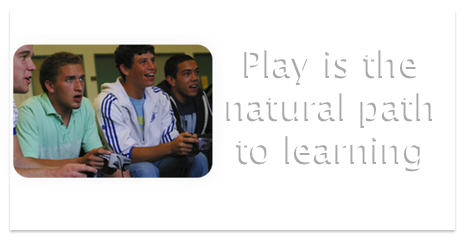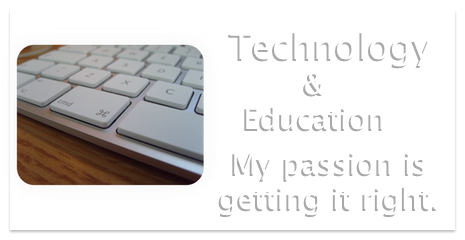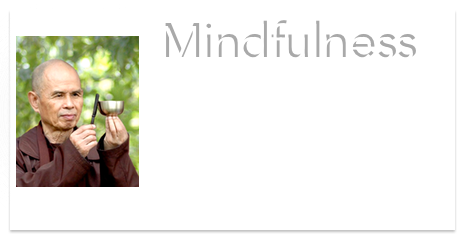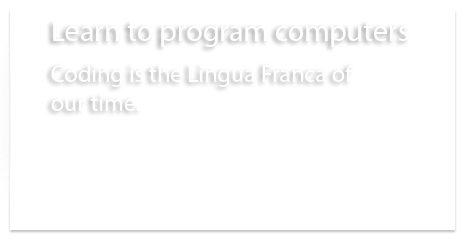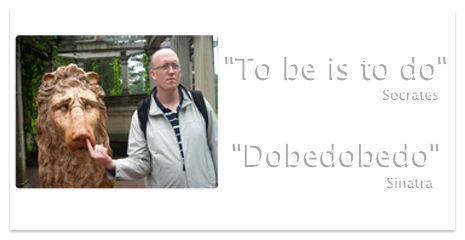Europe’s Northern–Eastern Realignment: Structure, History, and Poland’s Emerging Role
The current strategic realignment in Europe cannot be understood through headlines alone. It reflects a deeper pattern of alliance drift, hegemonic transition, and regional emancipation, in which long-standing assumptions of the post-1945 order are quietly eroding. The process is not unprecedented, but the configuration of forces—especially in Northern and Eastern Europe—is historically unusual.
At its core, the realignment is happening because U.S. guarantees feel less automatic, Russia is more openly revisionist, power is more widely distributed, and the states that remember subjugation most vividly are finally in a position—militarily and institutionally—to shape Europe’s security architecture instead of merely enduring it. This article focuses on that shift as it plays out along the Northern–Eastern arc: Poland, the Baltic states, Finland, and Sweden.
Understanding this transformation requires moving across three levels: the structure of the transatlantic system, the evolving role of Poland, and the emergence of a tightly integrated Northern–Eastern security spine that anchors Europe’s front line.
1. Three Layers of Realignment
The current shift is not simply a matter of “the U.S. pulling back” and “Europe stepping up.” It is a three-layer realignment involving:
- Security architecture – Who guarantees whom, and at what cost.
- Economic–industrial alignment – Who depends on whose supply chains, capital, energy, and technology.
- Cultural–ideological legitimacy – Who is treated as a moral and political anchor.
All three layers are moving at once. This concurrency gives the present moment a scale and intensity reminiscent of the post-war reconstruction era, but without the same clarity about hierarchy or leadership. The previous order had a clear center; the emerging one does not.
2. The Marshall Plan Era: Hegemonic Stability
From roughly 1947 to 1991, the Atlantic order rested on three reinforcing asymmetries:
- Military: The United States possessed overwhelming conventional and nuclear superiority.
- Economic: The U.S. was the industrial and financial core of the Western system.
- Ideological: Liberal democracy and U.S. leadership enjoyed exceptional legitimacy in the aftermath of fascism and in contrast to Soviet authoritarianism.
Europe did not merely ally with Washington; it nested inside a U.S.-anchored superstructure. NATO, Bretton Woods, the IMF, the World Bank, dollar hegemony, and later the European Communities and the EU were constructed within this framework. The result was high dependence, low strategic autonomy, and extraordinary stability. Security, liquidity, and ideological direction all flowed from the same source.
3. Decoupling Asymmetries: The Post–Cold War Drift
The contemporary shift is not a clean break from that order but a decoupling of the three former asymmetries.
Military asymmetry is narrowing.
Europe remains uneven in capability and fragmented politically, but it is no longer militarily helpless. Several states are rebuilding substantial forces and rediscovering deterrence and warfighting as central tasks rather than theoretical contingencies.
Economic asymmetry is dissolving into a tri-polar configuration.
The U.S., EU, and China now form a rough economic triangle, while Russia functions as a revisionist spoiler rather than a full systemic pole. No single actor can dictate global economic outcomes as cheaply or comprehensively as Washington once could.
Ideological asymmetry has eroded.
There is no longer a single, globally trusted ideological center. Liberal democracy now competes with techno-authoritarian capitalism, nationalist sovereignty projects, and civilizational-state narratives. The earlier assumption that most systems would converge on a liberal model has lost credibility.
As these asymmetries decouple, alliances become more transactional and less existential. States can remain formally aligned while the sense of shared destiny that characterized the early Cold War quietly erodes. This is the underlying reconfiguration that sits beneath headline events.
4. Why 1871–1914 Is a Better Analogy than 1945
The closest historical parallel to the present is not the immediate post-war era, but late-19th-century Europe after German unification.
Then, a once-dominant stabilizer—Britain—gradually withdrew from direct continental management. Rapid industrialization produced new power centers. Alliances became fluid, prestige-driven, and brittle. States entered arms races “just in case,” while the moral and political justification for the old order decayed slowly rather than collapsing outright.
Today, the United States resembles late-imperial Britain more than post-war America: still powerful, but more selective, more domestically constrained, and less willing to underwrite the entire system unconditionally. Europe, for its part, increasingly resembles pre-1914 Europe: technically advanced, politically divided, militarily anxious, and strategically uncertain.
Historically, such periods have not led immediately to systemic collapse. They have produced hyper-diplomacy, regional arms expansion, ideological polarization, and a rising risk of accidental escalation. The point of the analogy is structural, not predictive: the system is entering a phase where misalignment and miscalculation both become more likely, even if no one seeks a major war.
5. What Makes the Present Completely New
Despite the structural parallels, three factors make the current situation fundamentally different from any earlier realignment:
Nuclear weapons invert the logic of war.
In previous transitions, large wars recalibrated the system. Today, a large-scale war between major powers risks destroying the system itself. Rather than a violent reset, we see prolonged drift and instability without catharsis.
Economic coercion partially replaces conquest.
Sanctions, technology controls, energy leverage, and supply-chain reshoring now accomplish many of the political effects once pursued through territorial conquest and blockade. Economic and financial infrastructures have become instruments of strategic coercion.
Information systems fracture domestic cohesion.
No earlier alliance system contended with real-time propaganda warfare, algorithmic polarization, and large-scale identity manipulation. Internal cohesion within alliances can erode as quickly as external threats accumulate, making domestic politics a primary vector of strategic vulnerability.
These innovations create a system that appears robust under normal conditions but can become brittle under coordinated, multi-domain stress.
6. Europe as Strategic Subject Instead of Strategic Object
The central question is not whether the U.S. is “abandoning” Europe, but whether Europe can operate as a strategic subject rather than a strategic object. That shift requires:
- A more unified political command,
- A coherent and interoperable military doctrine,
- An integrated industrial defense base, and
- A consistent external narrative.
The EU is relatively strong on narrative, partial on industrial coordination, weak on unified political command, and fragmented on doctrine. This imbalance is the core structural risk: Europe is being pushed into responsibility faster than its institutions and political culture are prepared to absorb it.
The depth of the change is therefore not only geopolitical but civilizational. The United States is evolving from system-builder to system-consumer. Europe must decide whether it remains primarily a moral-legal project or becomes a geopolitical power—roles that often pull in different directions. In 1945, the task was reconstruction under a clear hierarchy. Today, the task is self-definition.
A concise periodization can help frame this evolution:
- 1945–1991: Hegemonic stability
- 1991–2010: Illusion of convergence
- 2010–2020: Systemic stress
- 2020–2035: Managed fragmentation
We are now in the early phase of managed fragmentation, in which alliances formally persist, but expectations and obligations within them are contested and renegotiated.
7. Germany, France, and the Systemic Core
Although this article focuses on the Northern–Eastern arc, the choices of Germany and France remain central.
- Germany sits at the industrial core of Europe and is wrestling with the implications of rearmament after decades of strategic restraint. Its willingness to translate economic weight into sustained hard power will shape the ceiling of European military autonomy.
- France brings nuclear deterrence, expeditionary capability, and a tradition of geopolitical thinking that is less dependent on Washington. Its strategic culture is more comfortable with power politics, but its economic base is smaller than Germany’s.
For Poland and the frontier states, the degree to which Berlin and Paris are willing to treat Eastern security as a shared, long-term strategic project—rather than a temporary emergency—will heavily condition whether the emerging Northern–Eastern formation becomes a durable pillar or a stressed buffer.
8. Poland’s Structural Role: From Buffer to Potential Pillar
Within this broader transformation, Poland is not an anomaly but an archetype. Its position reflects a long-running structural role on the fault line of Europe, where the North European Plain offers the easiest invasion corridor between Western Europe and Eurasia.
Historically, when no dominant continental stabilizer existed, Poland became a buffer or battlefield. When a stabilizer did exist, Poland became a forward outpost of the prevailing system. This logic runs through its modern history:
- Phase I: Commonwealth power → partitioned buffer (1600s–1795).
As a major power, the Polish–Lithuanian Commonwealth acted as an eastern shield against the Ottomans, Muscovy, and steppe incursions. Its collapse occurred amid the rise of Prussia, Russia, and Austria, in a context where no single stabilizer could guarantee its security.
- Phase II: Interwar sentinel → sacrificial buffer (1918–1939).
Reborn between a hostile Germany and a hostile Soviet Union, with weak collective security and no binding protector, Poland attempted strategic non-alignment and was destroyed in 1939. A hard lesson entered its strategic culture: neutrality between great powers is suicidal.
- Phase III: Soviet forward occupation zone (1945–1989).
Poland became a front-line state of the Warsaw Pact: militarized but not sovereign, strategically central yet politically subordinate. A second lesson followed: alignment with a bloc may be necessary, but subordination within it can be existentially dangerous.
- Phase IV: NATO forward bastion (1999–2020).
After 1989, Poland pursued a decisive realignment: accession to NATO and the EU, and full integration into the U.S. security system. It functioned as NATO’s eastern shield, a logistical corridor to the post-Soviet space, and a U.S. anchor in Central Europe. Unlike much of Western Europe, Poland never fully embraced post-military complacency; NATO has been treated as existential infrastructure.
- Phase V: From bastion to regional power node (now).
The war in Ukraine, doubts about absolute U.S. guarantees, and Europe’s re-militarization are shifting Poland from a shield to a regional military-industrial center of gravity. It is evolving from NATO tripwire to logistics engine, from U.S. forward base to regional command spine, from east–west buffer to east–west force hub, from pure consumer of security to partial producer.
Poland’s response to reduced U.S. reliability differs from that of many Western capitals. While Germany and France speak of “strategic autonomy,” Poland is pursuing a dual-anchor strategy: deepening hard-security integration with the U.S. while making itself indispensable within European defense. Historically, Poland has found it difficult to sustain this kind of dual anchoring. Its success now would mark a significant break from earlier patterns of vulnerability.
In balance-of-power terms, Poland sits on the land bridge between the Eurasian heartland and the Western rimland. It has oscillated between buffer and hinge. Modern Poland is moving towards a gatekeeper role, actively controlling access and flows: it hosts permanent allied forces, dominates the Baltic–Carpathian axis, and functions as Ukraine’s western military interface. This progression—from object, to hinge, to gatekeeper, and potentially to regional pillar—is historically exceptional but inherently unstable unless anchored in a durable alliance architecture.
9. Regional Reconfiguration: The Northern–Eastern Strategic Spine
A critical part of the realignment is the emergence of a Northern–Eastern European security continuum linking Poland, the Baltic states, Finland, and Sweden into a single deterrence system. Ukraine, though not yet structurally integrated into NATO or the EU, sits immediately adjacent to this spine and is central to its depth and long-term viability.
What unites the Northern–Eastern states is not only geography but a shared historical memory of Russian or Soviet domination, including occupation, cultural suppression, and elite liquidation. For these states, war is not a distant anomaly but a recurring condition. Their strategic culture rests on a simple inference: if Russia is strong and unchecked, their independence is at risk.
Their roles within the emerging security geometry are complementary:
- Baltic states: Too small to defend themselves unaided, they host NATO forces and act as an escalation tripwire and intelligence frontier. Any aggression there automatically internationalizes a crisis and locks in alliance involvement.
- Finland: With a large trained reserve, territorial defense doctrine, Arctic expertise, and deep civil–military integration, Finland locks Russia’s northwestern flank and forces Moscow to defend as well as threaten.
- Sweden: Controlling the western Baltic approaches, key undersea infrastructure, and important airspace, Sweden serves as a maritime and aerospace control node, securing reinforcement routes and communications.
- Poland: Provides mass maneuver forces and logistics, acting as the land anchor and operational hub for the entire arc.
Together, they form a contiguous deterrence spine, not a loose cluster. There is no easy invasion corridor, no isolated weak flank, and no low-risk testing ground. Such integrated north–south alignment inside a single security system did not exist at any point in the 20th century. It is the product of Russian revanchism, U.S. strategic recalibration, Europe’s delayed militarization, and a shared memory of subjugation.
At the same time, this spine sits within short missile flight times, a dense hybrid-warfare environment, and significant cyber and infrastructure vulnerability. It is simultaneously among the most defended and most exposed regions in Europe, which explains the rigidity of its deterrence posture.
10. Drivers of the Realignment
Several structural drivers reinforce and accelerate this configuration:
- Erosion of unquestioned U.S. hegemony. Domestic polarization, a strategic shift toward the Indo-Pacific, and skepticism about open-ended security commitments encourage European allies to hedge and seek greater self-reliance.
- Diffuse global power. A U.S.–EU–China triangle replaces the old Atlantic core, while Russia seeks to disrupt rather than dominate. Europe can no longer act as a protected appendage of an American system; it is being forced into strategic choice-making.
- Russian revisionism. Russia’s wars in Georgia, Crimea, and Ukraine have re-militarized the European agenda and validated the harshest historical expectations of frontier states. Geography again matters “in the old way.”
- Internal European tension and functional differentiation. Western states struggle with remilitarization; frontier states insist on robust forward defense; EU institutions try to translate economic integration into security integration. New centers of gravity emerge logically from the geography of risk: Poland as land-power hub, Finland as northern lock, Sweden as maritime/air node, and the Baltics as tripwire.
- Fragmented ideological confidence. The post-Cold-War belief in liberal convergence and benign globalization has given way to regime divergence, weaponized information, and a renewed primacy of hard power. For frontier states, this confirms that their traditional strategic culture was fundamentally correct; they now shape the security agenda more than ever before.
These dynamics do not predetermine the outcome, but they set the parameters within which choices are made.
11. Scenarios and Constraints for Poland
Poland’s trajectory within this environment could evolve along several plausible paths, depending particularly on U.S. credibility, EU military cohesion, and Ukraine’s long-term status.
- Regional security producer in managed fragmentation.
In this outcome, Ukraine stabilizes (even without total victory), the U.S. remains engaged but more selective, and EU defense cooperation becomes real rather than rhetorical. Poland becomes the core land-force provider for NATO’s eastern arc, a major arms manufacturing hub, and a doctrinal leader in maneuver warfare—analogous to Turkey’s military indispensability in its region, but anchored in NATO and the EU. The risk is that power projection without matching diplomatic weight could create friction, including subtle rivalry with Germany.
- Fortress frontier under partial disengagement.
Here, Ukraine freezes or fragments, U.S. commitment weakens but does not vanish, and EU coordination remains patchy. Poland becomes a heavily militarized shield with high deterrence but limited strategic upside, living in a quasi-permanent emergency posture. It resembles a more exposed version of Cold-War West Germany, but without the same degree of guaranteed alliance cohesion. Over-militarization, democratic strain, and cultural insulation from the rest of Europe are the primary risks.
- Fractured broker in systemic drift.
In a scenario of deeper U.S. retrenchment and EU political fragmentation, Poland attempts bilateral balancing among the U.S., Germany, France, and regional partners. It remains militarily strong but becomes strategically exposed and diplomatically isolated, an echo of interwar vulnerabilities in a more heavily armed age. The risk is overextension and eventual diplomatic abandonment.
Which scenario dominates depends crucially on whether Poland’s rearmament and strategic posture are integrated into a coherent European and transatlantic command structure or develop largely in parallel to a fragmented Western response.
Poland’s unique advantage lies in being one of the few major European powers where public opinion, political consensus, and historical narrative all support deterrence and military readiness. Its constraints—lack of nuclear deterrent, limited global naval reach, and modest ideological pull—imply that its maximum strategic potential is realized when it is paired with German industrial mass and French nuclear capabilities inside a stable alliance framework.
Conclusion
The ongoing realignment in Europe is driven by the quiet collapse of post-1945 assumptions, the decoupling of military, economic, and ideological asymmetries, and the renewed importance of geography and historical memory as primary strategic forces. The United States is less an unquestioned system-builder and more a selective guarantor. Europe is being pushed into strategic self-definition. And the states that most vividly remember Russian or Soviet domination are now structurally positioned to shape, rather than merely endure, the emerging security order.
Poland’s evolution from peripheral buffer to emerging regional pillar, and the consolidation of a Northern–Eastern strategic spine with the Baltics, Finland, and Sweden, are central to this story. The realignment is not another Marshall Plan moment of reconstruction within a clear hierarchy. It is a rebalancing without a clear center—a period that feels confusing rather than dramatic, quietly intensifies militarization and identity politics, and often appears stable right up until the moment it is tested.
Key Concepts (for reference)
- Hegemonic stability: A system in which one dominant power provides security, liquidity, and rule-setting, reducing incentives for major conflict among its allies.
- Decoupling asymmetries: The process by which military, economic, and ideological dominance that once resided in a single actor (the U.S.) spreads across multiple centers of power.
- Strategic subject vs object: A strategic subject sets agendas and shapes outcomes; a strategic object is primarily acted upon by others’ decisions.
- Buffer / hinge / gatekeeper / pillar (state roles):
- Buffer: absorbs pressure between larger powers.
- Hinge: its alignment decides which bloc prevails.
- Gatekeeper: actively controls access, routes, and flows.
- Pillar: provides stable capacity that others must accommodate.
Northern–Eastern spine: The integrated deterrence and defense formation linking Poland, the Baltic states, Finland, and Sweden into a contiguous, functionally specialized security zone.
Read More >>
Computational History
History as a System, Not a Story
Traditional historical study often centers on narrative: who did what, when, and why.
Computational history reframes the past as a complex system—a dynamic network of agents
(people, groups, nations), resources (food, technology, territory), and constraints
(environment, ideology, communication).
Each element is expressed as data:
- Population growth as numerical time-series.
- Political alliances as graph structures.
- Economic exchanges as weighted edges between nodes.
- Cultural attitudes as variable states within belief models.
By encoding historical information into logical and mathematical forms, we can run simulations that
explore how small changes in input conditions—a drought, an assassination, a religious reform—may lead
to dramatically different outcomes.
Boolean Logic: The Skeleton of Historical Systems
Boolean logic supplies the formal structure on which these systems operate. At its core, it represents
the simplest decision space: true/false, on/off, war/peace.
Illustrative rules:
Alliance == true increases the probability of coordinated military action.ResourceScarcity == true triggers rebellion where economic pressure crosses a threshold.CulturalAlignment == false raises tension between adjacent polities.
With these rules we construct state machines—abstract models that change based on logical
conditions. In simulation, thousands of transitions unfold over time, revealing patterns that mirror
real processes: economic collapse, ideological contagion, or imperial expansion.
Noetic Logic: Modeling Human Thought and Belief
History is not made by systems alone; it is made by minds. Noetic logic (from Greek
noēsis, “understanding”) formalizes mental states to describe how agents perceive truth,
assign value, and act based on internal reasoning.
Belief-driven dynamics we can model include:
- When religious conviction overrides economic self-interest.
- Why leaders interpret the same data—troop movements, trade reports, omens—differently.
- How shared myths and cognitive biases propagate and alter collective behavior.
In short, a Boolean model constrains what is possible; a noetic model helps explain
why actors choose among those possibilities.
Merging the Logical and the Noetic
The most powerful insight appears when we integrate both layers into a single computational framework:
Boolean logic defines external mechanics; noetic logic defines internal cognition operating within them.
- Initialize environment: political borders, economic indicators, climate data.
- Define agents: rulers, factions, institutions—each with belief matrices and behavioral parameters.
- Iterate through time: apply Boolean rules to update the world; apply noetic rules to update beliefs.
- Observe emergence: revolutions, migrations, alliances, collapses—mirroring or diverging from known outcomes.
Note: The goal is not deterministic prediction but probabilistic insight—ranges of
plausible trajectories given data and modeled psychology.
Predicting Without Pretending
Computational history cannot predict the future as prophecy. History’s complexity and contingency
preclude absolute foresight. But it can illuminate trajectories, reveal feedback loops,
and identify leverage points where decisions—individual or collective—produce outsized effects.
For education and research, simulations help to:
- Clarify cause and effect in nonlinear systems.
- Bridge humanities and computation in authentic inquiry.
- Explore how much of history is logic—and how much is human imagination.
Toward a New Craft of Historical Inquiry
The aim is not to replace traditional scholarship but to augment it—equipping historians
with tools to explore questions that text alone cannot answer. By fusing Boolean precision with noetic
subtlety, we can build models that respect both the mechanics and the meaning of human events.
In doing so, we reclaim history not as static record, but as living computation—an ever-evolving
simulation of mind, matter, and possibility.
Author’s note: This article outlines my working approach to computational history. If you’re interested
in classroom-ready exercises, agent-based demos, or formal specifications for the noetic/Boolean layers,
feel free to reach out.
Read More >>
Hacking in space
For me, programming has always been an adventure, a way to explore ideas, systems, and new ways of thinking. And right now, my latest obsession is building a 3D space server for a 4X game.
This isn’t just any project; it’s a real labor of love. It’s one of those endeavors where I find myself just hacking away, thinking about how all the pieces fit together, and iterating on the mechanics of space movement, exploration, and simulation. I’ve been fascinated by space games for a long time—especially those that model and simulate 3D space in meaningful ways. There’s a certain beauty in translating real-world physics and strategy into code, creating a universe that feels alive with possibility.
My love for coding and game development started with text-based multiplayer games. Back in the day, I spent countless hours on PennMUSH servers, fascinated by the intricate worlds that could be created with text alone. These games were more than just entertainment—they were interactive systems that rewarded creativity, strategic thinking, and collaborative storytelling. Playing these games shaped the way I approach programming. They taught me to think about data structures, world-building, and the fine balance between rules and player agency.
Now, with my 4X space server, I get to apply those lessons in a whole new dimension—literally. Designing movement in a true 3D space, handling scale, managing player interactions, and ensuring the world remains dynamic and engaging are all challenges I relish. I love the deep systems thinking that comes with game development: balancing resource management, tactical combat, and exploration while keeping everything efficient and scalable.
But more than anything, this project is about learning. I’ve always believed that game programming is one of the best ways to grow as a developer. It forces you to think across multiple domains—physics, AI, databases, networking, UI design—and integrate them into a cohesive whole. Every time I work on this project, I discover something new, whether it’s a better way to handle spatial indexing or a clever trick for optimizing server-side calculations.
For me, coding has never just been about solving problems; it’s about creating worlds. And this 3D space server is one of my most exciting worlds yet. Whether or not this project ever sees the light of day beyond my own development machine, it’s an experience I cherish. Because at the end of the day, I’m here for the journey—the hacking, the problem-solving, and the sheer joy of making something that feels like magic.
Read More >>
Automation Has Made Programming Less Fun.
The screen blinked back at me, a silent acknowledgment of the journey I was embarking upon. Over the past 41 years, coding has been more than just a profession; it's been a passion fueled by curiosity, creativity, and the thrill of solving complex problems. But recently, I had an experience that made me question the evolving landscape of programming and its impact on the joy it once brought me.
A few weeks ago, I decided to create a simple ASCII-art 4X space game—a project that, in the past, would have been a delightful challenge filled with hours of brainstorming, debugging, and incremental victories. This time, however, I turned to a Large Language Model (LLM) to assist me. In just about two hours, the game was complete. No hurdles, no late-night problem-solving sessions, no trial-and-error. And yet, instead of feeling accomplished, I was... bored.
Coding has always been akin to solving a intricate puzzle. Each bug fixed and each function optimized brings a sense of achievement that's hard to replicate. The process demands patience, logical thinking, and creativity. It's not just about the end product; it's about the journey—the countless trials and errors that lead to the final result.
When an LLM can generate code in a fraction of the time, it strips away the challenges that make coding rewarding. The automation of problem-solving turns an engaging process into a mechanical one. The excitement of unraveling a complex issue diminishes when the solution is handed to you on a silver platter.
As an educator, I see the same patterns emerging among my students who are learning to code. The allure of quick solutions is tempting, but it deprives them of the fundamental experiences that build proficiency and confidence. Struggling with code isn't a setback; it's a crucial part of the learning curve. It's through debugging and iterative problem-solving that students develop a deeper understanding of programming concepts.
When students rely too heavily on AI-generated code, they miss out on the opportunity to think critically and develop their problem-solving skills. The "eureka" moments that come after hours of hard work are invaluable. They not only reinforce learning but also build resilience and a growth mindset.
This isn't to say that LLMs and AI tools have no place in programming—they undoubtedly increase efficiency and can handle repetitive tasks with ease. However, it's essential to strike a balance. For seasoned programmers like myself, perhaps it's about using these tools to handle mundane aspects while reserving the more challenging problems for manual coding. For students, it might mean using AI as a learning aid rather than a crutch.
Coding is changing rapidly with the advent of AI and automation. While these tools offer incredible benefits, they also pose questions about the future of programming as a fulfilling craft. For those of us who find joy in the challenges of coding, it's important to remember why we started in the first place. And for the new generation of coders, embracing the hard work and the hurdles isn't just beneficial—it's essential.
The next time you sit down to code, consider taking the longer path. Embrace the difficulties, relish in the trial-and-error, and remember that sometimes, the struggle is where the real fun lies.
Read More >>

